
Industrial conglomerate Honeywell (NASDAQ:HON) reported Q1 CY2025 results beating Wall Street’s revenue expectations, with sales up 7.9% year on year to $9.82 billion. On the other hand, the company’s full-year revenue guidance of $40.05 billion at the midpoint came in 0.7% below analysts’ estimates. Its non-GAAP profit of $2.51 per share was 13.6% above analysts’ consensus estimates.
Is now the time to buy Honeywell? Find out by accessing our full research report, it’s free.
Honeywell (HON) Q1 CY2025 Highlights:
- Revenue: $9.82 billion vs analyst estimates of $9.59 billion (7.9% year-on-year growth, 2.5% beat)
- Adjusted EPS: $2.51 vs analyst estimates of $2.21 (13.6% beat)
- The company reconfirmed its revenue guidance for the full year of $40.05 billion at the midpoint
- Management slightly raised its full-year Adjusted EPS guidance to $10.35 at the midpoint
- Operating Margin: 20.1%, down from 23% in the same quarter last year
- Free Cash Flow Margin: 3.5%, up from 2.4% in the same quarter last year
- Organic Revenue rose 4% year on year (2.7% in the same quarter last year)
- Market Capitalization: $129.1 billion
"Honeywell started the year off exceptionally well, exceeding guidance across all metrics, led by solid organic growth," said Vimal Kapur, chairman and chief executive officer of Honeywell.
Company Overview
Originally founded in 1906 as a thermostat company, Honeywell (NASDAQ:HON) is a multinational conglomerate known for its aerospace systems, building technologies, performance materials, and safety and productivity solutions.
Sales Growth
A company’s long-term performance is an indicator of its overall quality. Any business can have short-term success, but a top-tier one grows for years. Regrettably, Honeywell’s sales grew at a sluggish 1.6% compounded annual growth rate over the last five years. This was below our standards and is a poor baseline for our analysis.
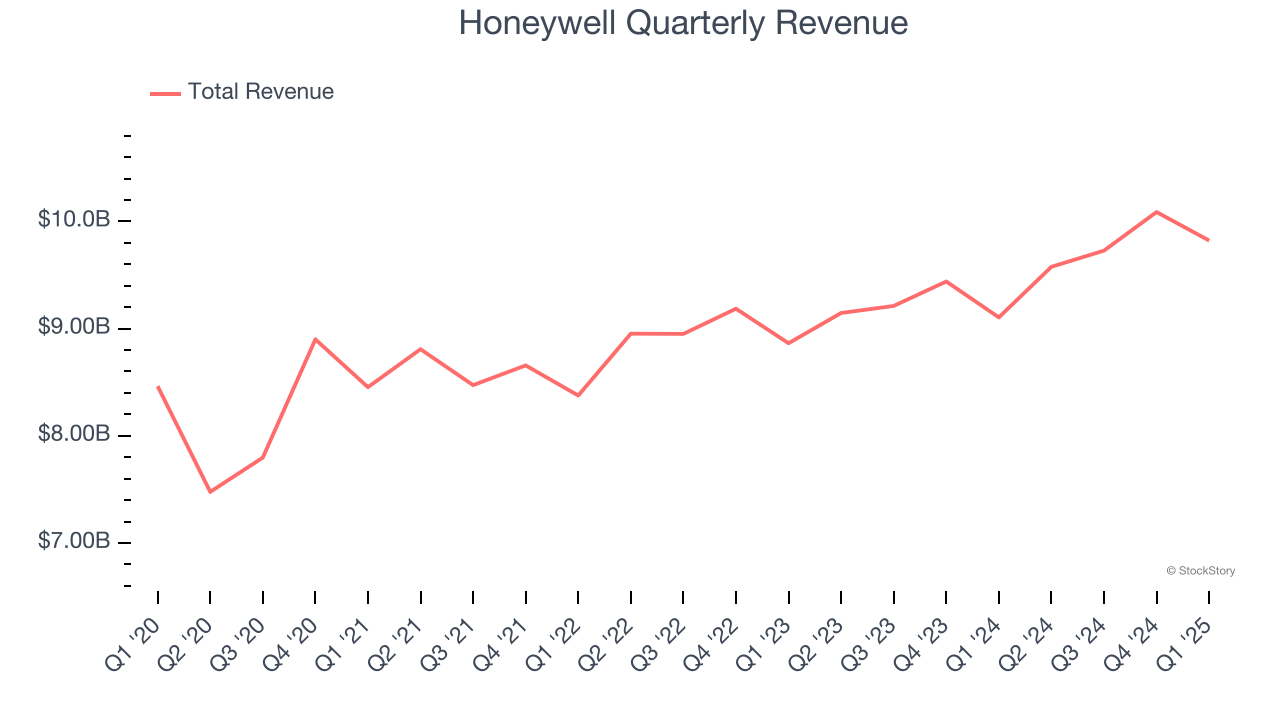
We at StockStory place the most emphasis on long-term growth, but within industrials, a half-decade historical view may miss cycles, industry trends, or a company capitalizing on catalysts such as a new contract win or a successful product line. Honeywell’s annualized revenue growth of 4.4% over the last two years is above its five-year trend, but we were still disappointed by the results. 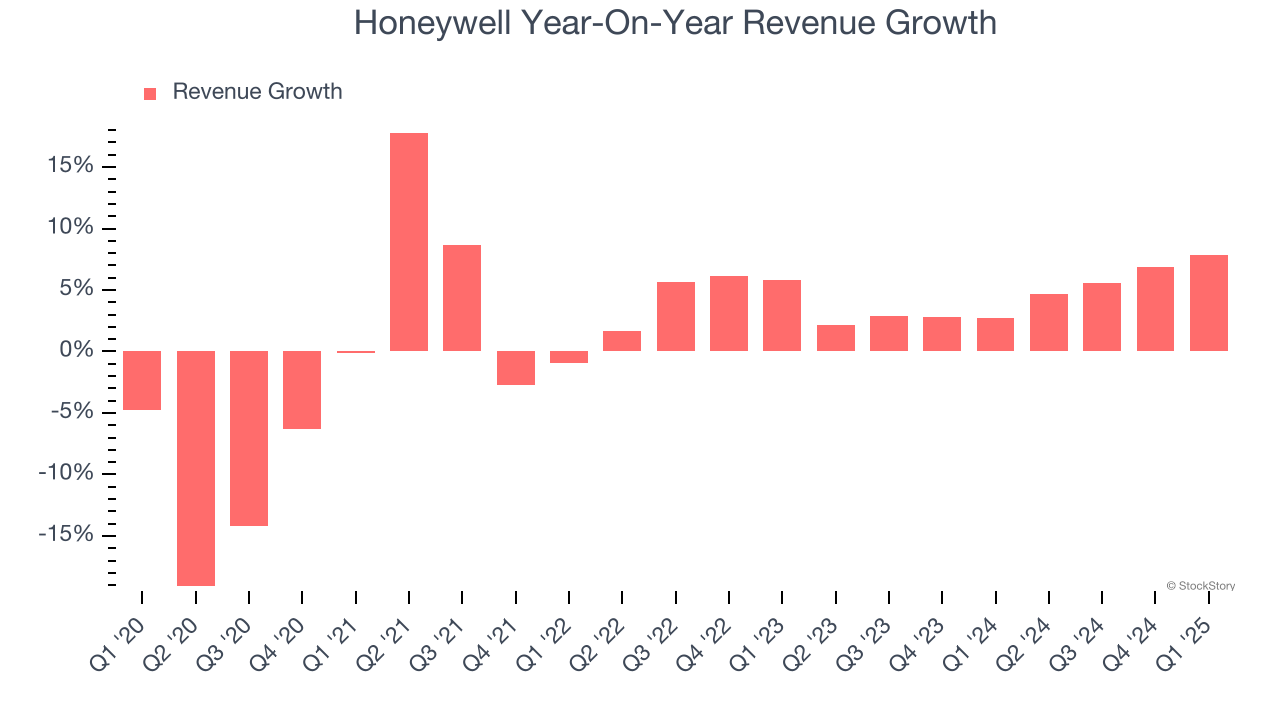
We can better understand the company’s sales dynamics by analyzing its organic revenue, which strips out one-time events like acquisitions and currency fluctuations that don’t accurately reflect its fundamentals. Over the last two years, Honeywell’s organic revenue averaged 2.8% year-on-year growth. Because this number is lower than its normal revenue growth, we can see that some mixture of acquisitions and foreign exchange rates boosted its headline results. 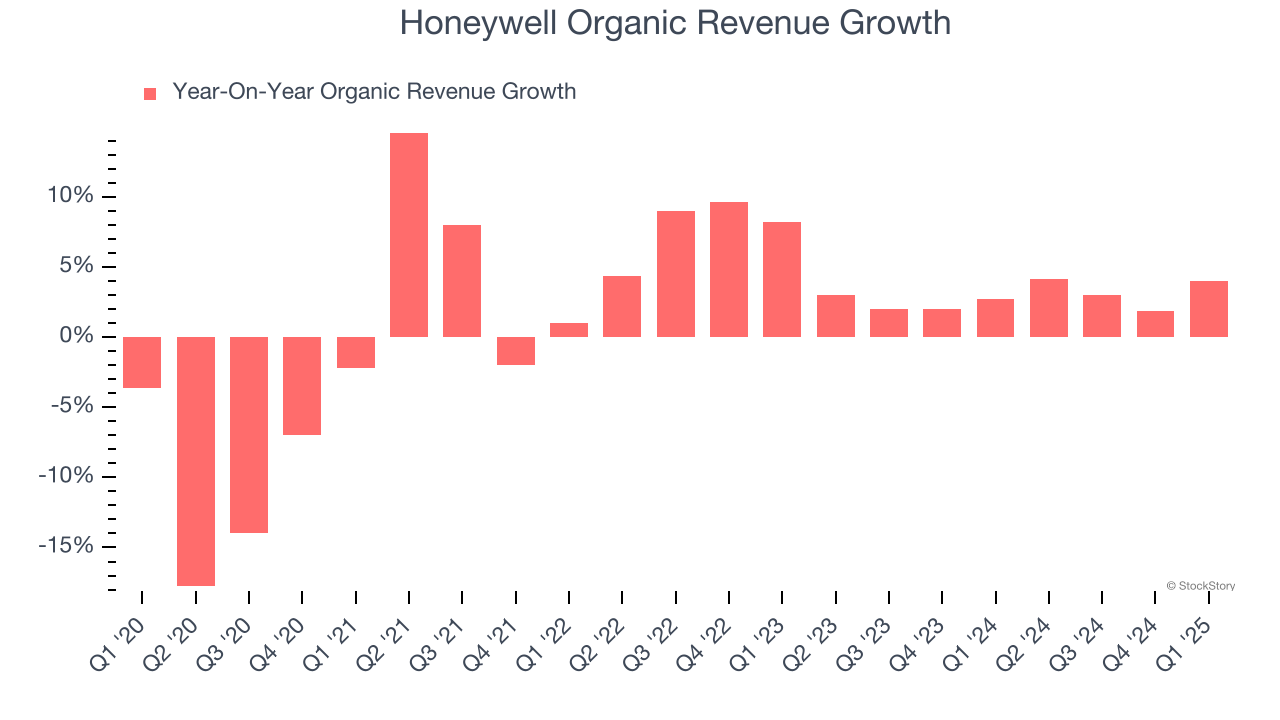
This quarter, Honeywell reported year-on-year revenue growth of 7.9%, and its $9.82 billion of revenue exceeded Wall Street’s estimates by 2.5%.
Looking ahead, sell-side analysts expect revenue to grow 4% over the next 12 months, similar to its two-year rate. This projection doesn't excite us and implies its newer products and services will not catalyze better top-line performance yet.
Here at StockStory, we certainly understand the potential of thematic investing. Diverse winners from Microsoft (MSFT) to Alphabet (GOOG), Coca-Cola (KO) to Monster Beverage (MNST) could all have been identified as promising growth stories with a megatrend driving the growth. So, in that spirit, we’ve identified a relatively under-the-radar profitable growth stock benefiting from the rise of AI, available to you FREE via this link.
Operating Margin
Operating margin is a key measure of profitability. Think of it as net income - the bottom line - excluding the impact of taxes and interest on debt, which are less connected to business fundamentals.
Honeywell has been a well-oiled machine over the last five years. It demonstrated elite profitability for an industrials business, boasting an average operating margin of 20.6%. This result isn’t too surprising as its gross margin gives it a favorable starting point.
Looking at the trend in its profitability, Honeywell’s operating margin rose by 1.4 percentage points over the last five years, as its sales growth gave it operating leverage.
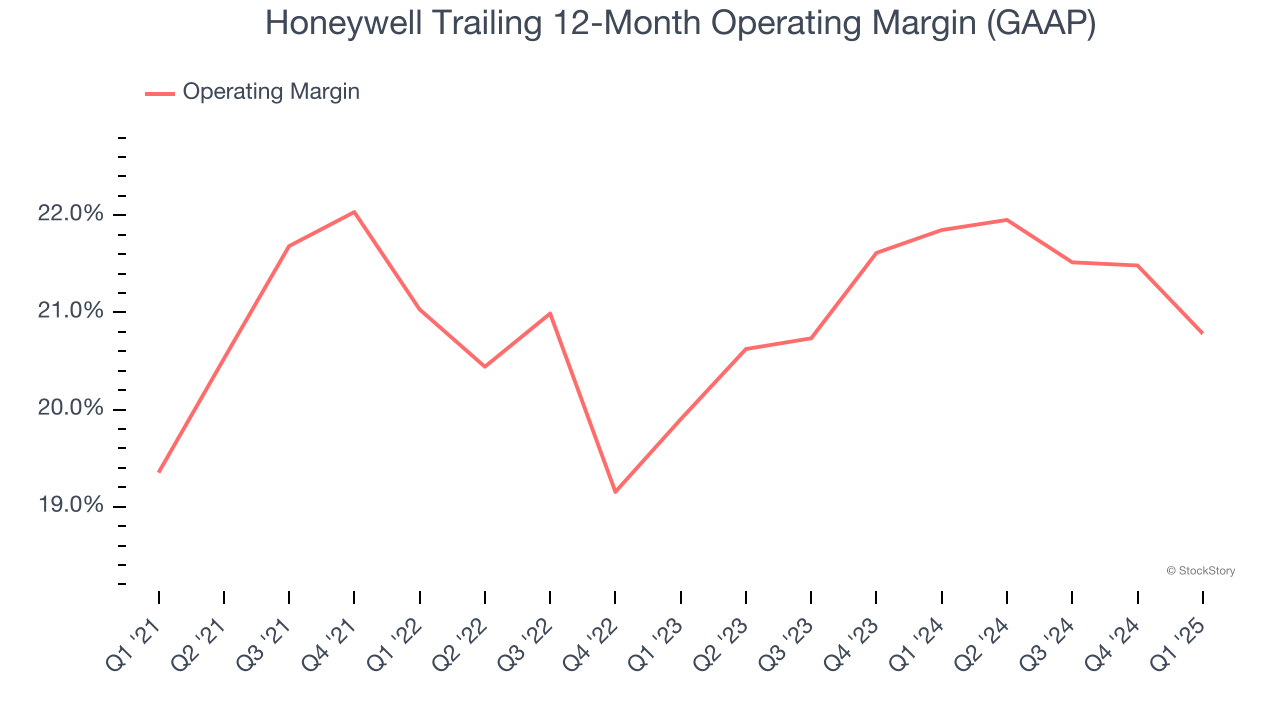
In Q1, Honeywell generated an operating profit margin of 20.1%, down 2.9 percentage points year on year. Since Honeywell’s operating margin decreased more than its gross margin, we can assume it was less efficient because expenses such as marketing, R&D, and administrative overhead increased.
Earnings Per Share
We track the long-term change in earnings per share (EPS) for the same reason as long-term revenue growth. Compared to revenue, however, EPS highlights whether a company’s growth is profitable.
Honeywell’s EPS grew at a weak 3.5% compounded annual growth rate over the last five years. On the bright side, this performance was better than its 1.6% annualized revenue growth and tells us the company became more profitable on a per-share basis as it expanded.
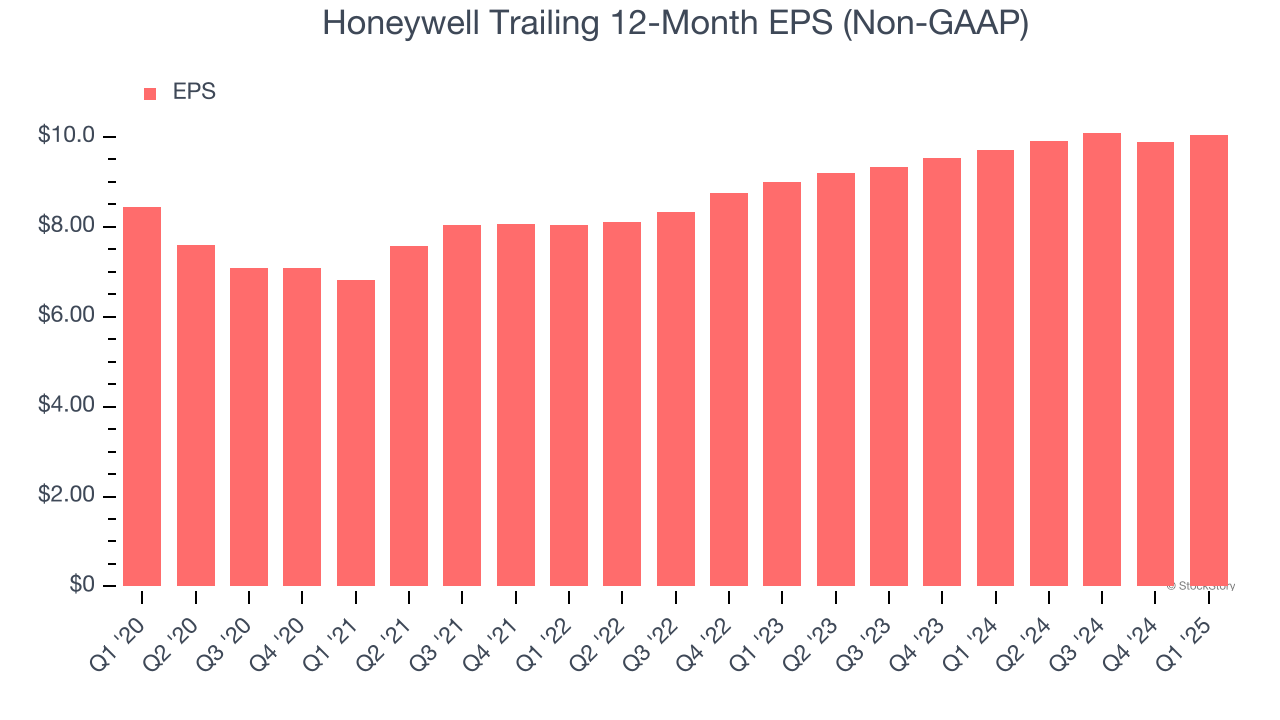
Diving into the nuances of Honeywell’s earnings can give us a better understanding of its performance. As we mentioned earlier, Honeywell’s operating margin declined this quarter but expanded by 1.4 percentage points over the last five years. Its share count also shrank by 9.1%, and these factors together are positive signs for shareholders because improving profitability and share buybacks turbocharge EPS growth relative to revenue growth. 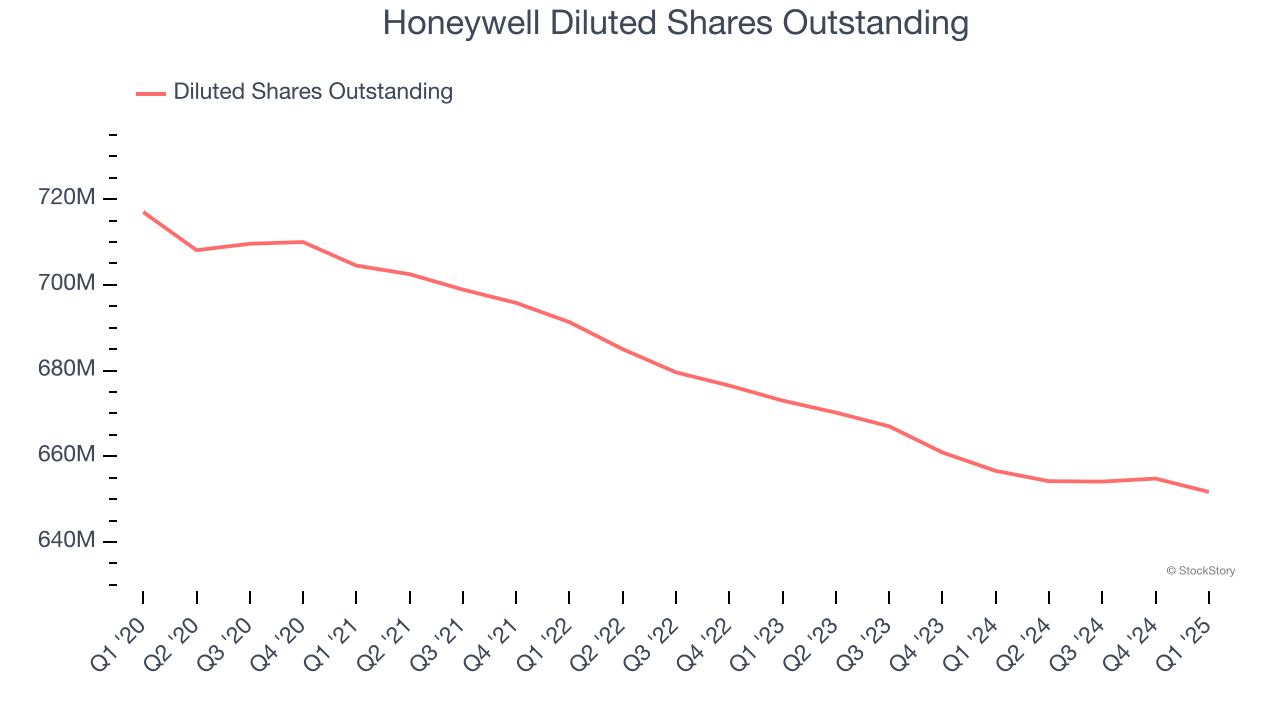
Like with revenue, we analyze EPS over a more recent period because it can provide insight into an emerging theme or development for the business.
For Honeywell, its two-year annual EPS growth of 5.7% was higher than its five-year trend. Accelerating earnings growth is almost always an encouraging data point.
In Q1, Honeywell reported EPS at $2.51, up from $2.34 in the same quarter last year. This print easily cleared analysts’ estimates, and shareholders should be content with the results. Over the next 12 months, Wall Street expects Honeywell’s full-year EPS of $10.05 to grow 5.7%.
Key Takeaways from Honeywell’s Q1 Results
We enjoyed seeing Honeywell beat analysts’ organic revenue expectations this quarter. We were also glad its revenue outperformed Wall Street’s estimates. On the other hand, its full-year revenue and EPS guidance both slightly missed. Overall, we think this was a mixed quarter. The stock traded up 2.2% to $204.98 immediately after reporting.
Indeed, Honeywell had a rock-solid quarterly earnings result, but is this stock a good investment here? The latest quarter does matter, but not nearly as much as longer-term fundamentals and valuation, when deciding if the stock is a buy. We cover that in our actionable full research report which you can read here, it’s free.
